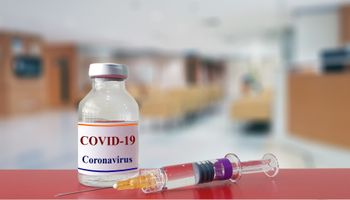Cabotegravir:
Acquired immunodeficiency syndrome (AIDS) is the end stage of HIV infection. The worldwide, daily incidence is 5000 new infections per day. This HI virus can attack certain cells of the body's immune system. Symptoms like weight loss or diarrhea, flu symptoms, in the later stage possibly infections (e.g.: pneumonia) can develop. An infection with the HI virus is currently not curable, but can be treated very well. With HIV medication, the viral load in the blood can be kept below the so-called detection limit. As a result, a more stable immune system can be rebuilt, a higher stage of disease can be prevented, and infectivity can be minimized or eliminated.
In highly active anti-retroviral therapy (HAART for short), individually adapted different drugs are combined to prevent the development of resistance of the HI virus. In this context, daily oral administration of tenofovir disoproxil fumarate emtricitabine (TDF-FTC) could offer potential protection against HIV infection in different populations. Since these must be taken daily, researchers were now investigating the efficacy of oral pre-exposure prophylaxis (PrEP for short) agents, which do not require regular or scheduled use, to increase eventual uptake and protection during periods of risk.
The study investigated the active ingredient cabotegravir, which is contained in the drug Vocabria. This is used together with the drug rilpivirine to treat adults infected with HIV type 1 (i.e. causes AIDS). Vocabria inhibits a certain enzyme (integrase) that the virus needs to produce new copies of itself in the body. This keeps the amount of HIV in the blood low.
The drug was investigated in three main studies. This showed a significant effect in patients with HIV infection, without and with prior use of other HIV drugs. One study administered the drug (in combination with rilpivirine) monthly or every two months. The outcome was similar in efficacy to the other two study designs. After 48 weeks, HIV-1 levels were above threshold in 1.7% patients (injected every 2 months), with 1% of patients with monthly injections recording a threshold excess in comparison.
HIV Prevention Study:
The 2021, randomized, double-blind, noninferiority trial published in the New England Journal of Medicine examined long-acting injectable cabotegravir in this context. The agent was administered intramuscularly at a dose of 600 mg every 8 weeks and compared with daily oral tenofovir disoproxil fumarate-emtricitabine (TDF-FTC for short) in at-risk cisgender men who have sex with men and in at-risk transgender women who have sex with men. Participating individuals were randomly assigned (1:1) to a treatment method in 153-week studies. HIV testing and safety assessments were conducted.
Significant results:
A total of 4566 participating individuals were screened, with 12.5% (ie, 570 participants) reporting being transgender women. The mean age was 26 years. According to the analysis, HIV infection occurred in 52 participants, 13 of whom were in the randomized group receiving cabotegravir. The effect was the same in all individual subgroups, with injection site reactions recorded in 81.4% of participants in the cabotegravir group and 31.3% in the control group.
Conclusion:
According to study results, injectable cabotegravir was more protective against HIV infection in men who have sex with men and transgender women than in the TDF-FTC group.
A similarly designed, currently ongoing study, controlled for the effect of cabotegravir in cisgender women in Africa. This study was unblinded early as researchers noted superiority of cabotegravir over daily oral TDF-FTC. Furthermore, the safety and acceptability of cabotegravir is being studied in adolescents.
Cabotegravir injections, which are used monthly or every two months, may be more beneficial to patients than daily drug administration. In the EU, Vocabria, a drug containing the active ingredient cabotegravir, may be approved, according to the EMA.
In any case, safe and effective long-term agents for pre-exposure prophylaxis of HIV infection are needed to expand the options for prevention of HIV infection.






